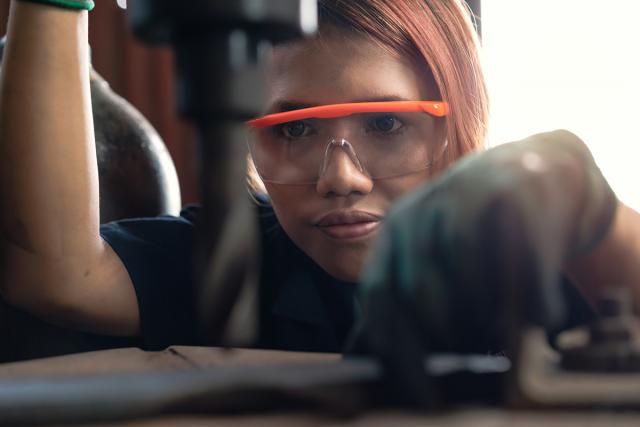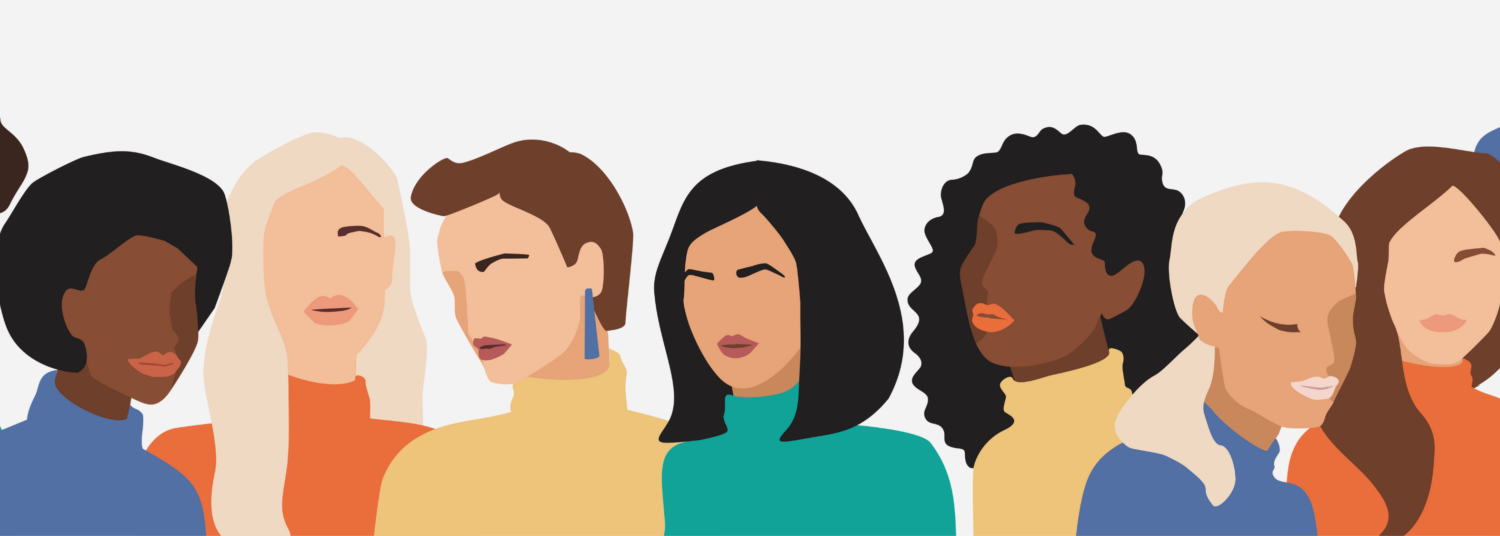Before the pandemic, deaf employees of all trades faced barriers and challenges, which have now become magnified by the major workplace and life changes imposed by the response to COVID-19.
Yet deaf people have seized the opportunity to be flexible, stay optimistic, and remain resilient.
That’s according to the panelists who addressed hundreds of attendees gathered for two #DeafAtWork online panels — one about working from home and another about working onsite — organized by the National Deaf Center on Postsecondary Outcomes (NDC) on May 27 and June 9. Both sets of panelists shared their work experiences, success stories, and strategies for coping and communicating.
“Deaf people are already prepared to be adaptable under difficult circumstances,” said Carrie Lou Garberoglio, PhD, NDC Associate Director. “The pandemic is adding another dimension of ‘deaf gain,’ which emphasizes the strengths of the deaf community to think creatively, find solutions, and embrace new technology to connect and communicate.”
Changes Needed in Accommodations, According to Polls
During both panels, deaf attendees asked questions of the panel and were grateful to connect with other deaf employees, especially during a time of social distancing. Attendees were also polled on their experiences at work, which provided a valuable glimpse into the daily life of deaf U.S. workers during the pandemic.
Of those working at home or remotely:
87% need “some” or “a lot” of changes in accommodations.
71% have a different amount of workload and responsibilities.
62% report “higher than usual” or “very high” stress levels.
54% are only “sometimes” connecting with peers.
Of those working onsite as essential or frontline workers:
73% need different or additional accommodations, with 14% noting the employer did not provide those accommodations.
57% are worried about losing their job if they don’t keep working onsite.
25% report feeling “not safe” at work, while 39% report feeling only “somewhat safe.”
20% report little or no breaks or flexibility in the workplace.
#DeafAtWork From Home
The first panel on May 27 focused on deaf people who were previously working face-to-face and are now working at home or in a remote environment. The deaf panelists were Kyle Adams, a financial analyst for Starbucks; disability advocate Callie Frye, who works for Disability Rights California; and therapist David “DT” Bruno, who is also chair of the National Association of the Deaf Youth Section.
The panelists agreed that their productivity was higher than usual, and all had found unique ways to adapt to the major changes in both work and home and life. Tapping into technology, staying optimistic, and maintaining strong communications were cited as critical components of their success.
They also shared their experiences about needing to arrange their own American Sign Language (ASL) interpreters and other accommodations, coping with heavier workloads, trying to avoid screen burnout, and having to set firm boundaries at home between work and personal lives.
Panelists’s comments included:
“On my team, I’m the only deaf employee,” said Adams. “Now that we are working remotely, I have an interpreter who can be available for scheduled meetings. If something is last minute and I don’t have access to an interpreter, I will use the auto caption feature to help me keep up with the conversation, then I’ll follow up if there’s anything I need to clarify.”
“I think self-care is so very important,” said Frye. “We need to take regular breaks during the day. Working from home takes a lot of adjustment. It can become overwhelming and add stress to our lives. But once we get used to it and get into a routine, we figure out how we can [incorporate] self-care and have calming moments.”
“My productivity is fairly high, but I’m more exhausted. I have more responsibilities, and there are more demands being put on me,” said Bruno, who also reminded attendees that they are all working through a global pandemic and to regularly seek care and human connection.
Strategies the panelists used to cope with the new working arrangements include:
Book ASL interpreters to arrive 15 minutes before meetings begin, to not miss icebreakers or side conversations.
Use Microsoft Translator or other captioning applications when an interpreter is not present.
Take advantage of frequent meetings and check-ins with supervisors, teams, and colleagues to prioritize communication and stay connected.
Reduce screen time and disconnect from technology when not working, to avoid video fatigue and burnout, or wear glasses with UV blue light blocking lenses.
Improve productivity by preparing meals and planning ahead for the work week on Sundays.
#DeafAtWork Onsite
The second panel on June 9 focused on deaf people who are working onsite as essential or frontline workers. The deaf panelists were Jordan Jones, an airplane mechanic for Envoy Air; Ruthie Jimenez, who works in an Amazon warehouse; and Dalton Allen, a computer numerical control programmer for Tiffany & Company.
The panelists emphasized their diligence about following personal protection protocols and adhering to strict workplace rules to stop the spread of COVID-19. All are regularly using face masks despite the communications barriers that can arise. When asked about masks with clear panels that show more of a person’s face, two panelists said they had been tried at their job sites, but both agreed they were “not a great solution.”
Jones, Jimenez, and Allen are also striving to not let social distancing inhibit connections with coworkers and are using technology, being patient, and teaching sign language to creatively bridge any divides. Their comments included:
“My interaction with co-workers has changed,” said Jones. “We are required to wear masks. It is difficult for me because I do sometimes rely on spoken English and if I move my mask down or ask someone else, they may feel uncomfortable with that. As an alternative method, I use my phone with auto captions, which is not 100 percent effective.”
“I realize how important masks are, but they also realize how important communication is,” said Jimenez. “For us, as deaf people, we need to see that part of the face. They are trying their best to gesture bigger than ever before and type back and forth more than ever before. Hearing colleagues are willing to work with us. Be patient to communicate and don’t give up on trying to work together to have effective communication.”
“Being [socially] distanced at lunch definitely has an impact on our ability to socialize,” said Allen. “We have used the opportunity to teach my co-workers sign language, since signing is something that we can do from afar. This has been a great time to teach people and for us to learn to communicate without sound, but the social impact at work is big.”
Strategies the panelists used to cope working onsite include:
If a meeting does not have an ASL interpreter, ask a supervisor to send an email summarizing the meeting’s details and outcomes.
Use Amazon Chime or other apps to improve communication with coworkers, especially in loud workplaces.
Help educate your coworkers on the importance of following protocols while understanding the challenges deaf employees face.
Both panels were moderated by Diego Guerra, who is the community engagement coordinator at NDC.
Where to Seek Help
Navigating Disclosure in the Workplace is an NDC tip sheet for deaf people who are in the application stage of employment. How to Host Effective and Accessible Online Meetings with Deaf Participants provides detailed guidelines for remote collaboration. The NDC Help Team also refers to the following resources:
Job Accommodations Network: Free accessibility consultations with employers and people navigating various workplace scenarios.
ADA Regional Centers: Free technical assistance regarding ADA accommodations in employment and other settings.
Equal Employment and Opportunity Commission (EEOC): Information regarding employment discrimination and reasonable accommodations under the ADA.
National Disability Rights Network: Advocacy and legal support available via each state’s disability rights network organization.
Working Together: Deaf & Hearing People: An online course created by DeafTec for employers, coworkers, human resources staff, and others seeking to build an inclusive work environment.
Vocational Rehabilitation (VR) Resources from NDC: Learn how VR services can help and where to contact your local VR office to support finding and maintaining employment.









